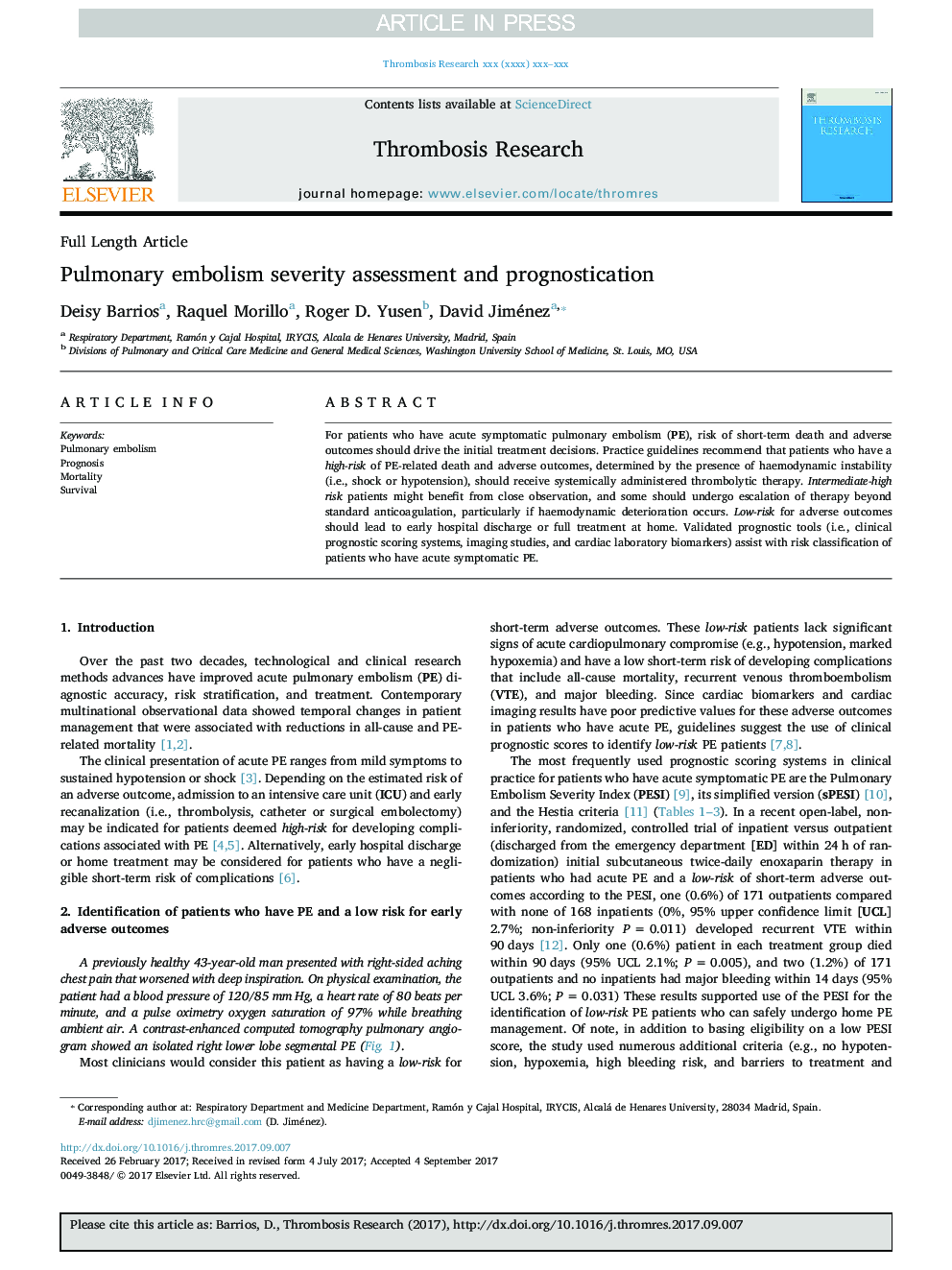| Article ID | Journal | Published Year | Pages | File Type |
|---|---|---|---|---|
| 8679616 | Thrombosis Research | 2018 | 6 Pages |
Abstract
For patients who have acute symptomatic pulmonary embolism (PE), risk of short-term death and adverse outcomes should drive the initial treatment decisions. Practice guidelines recommend that patients who have a high-risk of PE-related death and adverse outcomes, determined by the presence of haemodynamic instability (i.e., shock or hypotension), should receive systemically administered thrombolytic therapy. Intermediate-high risk patients might benefit from close observation, and some should undergo escalation of therapy beyond standard anticoagulation, particularly if haemodynamic deterioration occurs. Low-risk for adverse outcomes should lead to early hospital discharge or full treatment at home. Validated prognostic tools (i.e., clinical prognostic scoring systems, imaging studies, and cardiac laboratory biomarkers) assist with risk classification of patients who have acute symptomatic PE.
Related Topics
Health Sciences
Medicine and Dentistry
Cardiology and Cardiovascular Medicine
Authors
Deisy Barrios, Raquel Morillo, Roger D. Yusen, David Jiménez,
